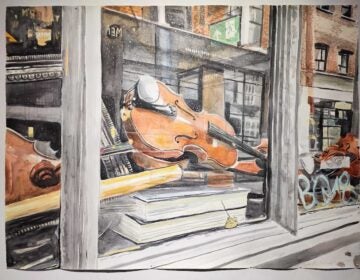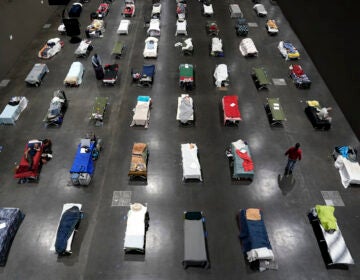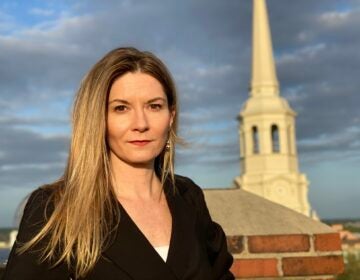The Mütter Museum exhibits homelessness as a public health concern
“Unhoused” advocates empathy for people experiencing homelessness, through art installations and scientific data.
Listen 1:15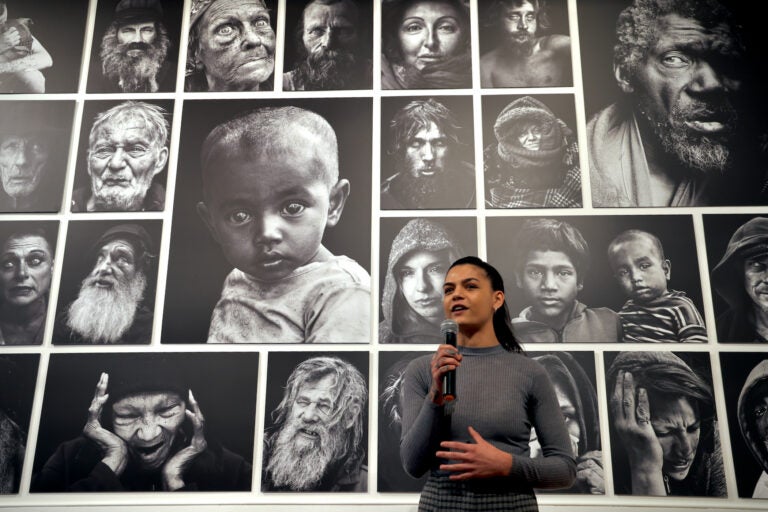
Leah den Bok speaks about her portraits of people experiencing homelessness, part of an exhibit at the Thompson Gallery of the Mütter Museum,''Unhoused: Personal Stories and Public Health.'' (Emma Lee/WHYY)
From Philly and the Pa. suburbs to South Jersey and Delaware, what would you like WHYY News to cover? Let us know!
If it wasn’t for Mother Teresa, Leah den Bok would not be alive.
The 23-year-old photographer grew up outside Toronto, Canada, but her mother was born in Calcutta, India, where at 3 years old she was found wandering in the street, alone with a head wound. A concerned stranger brought her to the orphanage run by Mother Teresa.
“It was just because of the wound on her head that he took pity on her,” den Bok said. “At that time often women were discarded because of the dowry system there.”
India used to have a system whereby young women could not get married unless their parents presented the family of the groom with a dowry, often a substantial sum which poorer families could not afford. The practice, which was outlawed in 1961 but still persists informally, prompted some families to abandon their daughters, and sometimes kill them.
Den Bok’s mother was taken in by Mother Teresa, then adopted by a family in Ontario when she was 5 years old. They stayed in touch.
“We always had Mother Teresa’s letters that she would exchange with my mother on display, and we would have her photographs up,” den Bok said. “It’s been affecting me more subconsciously, and now I’ve taken Mother Teresa on as a really big inspiration for my project.”

Her project is “Humanizing the Homeless,” in which she finds, interviews, and photographs people experiencing homelessness in city streets around the world. She started when she was 15 years old and has since made portraits of about 600 people, mostly in her hometown of Toronto, but also in cities across Canada, in the United States, Spain and her mother’s birth country India.
Forty of her portraits are included in the Mütter Museum’s new exhibition “Unhoused: Personal Stories and Public Health.” The display features den Bok’s photography on a wall opposite from an arrangement of about 100 hand-written cardboard signs collected from people experiencing homelessness, collected by artist Willie Baronet, of Texas.
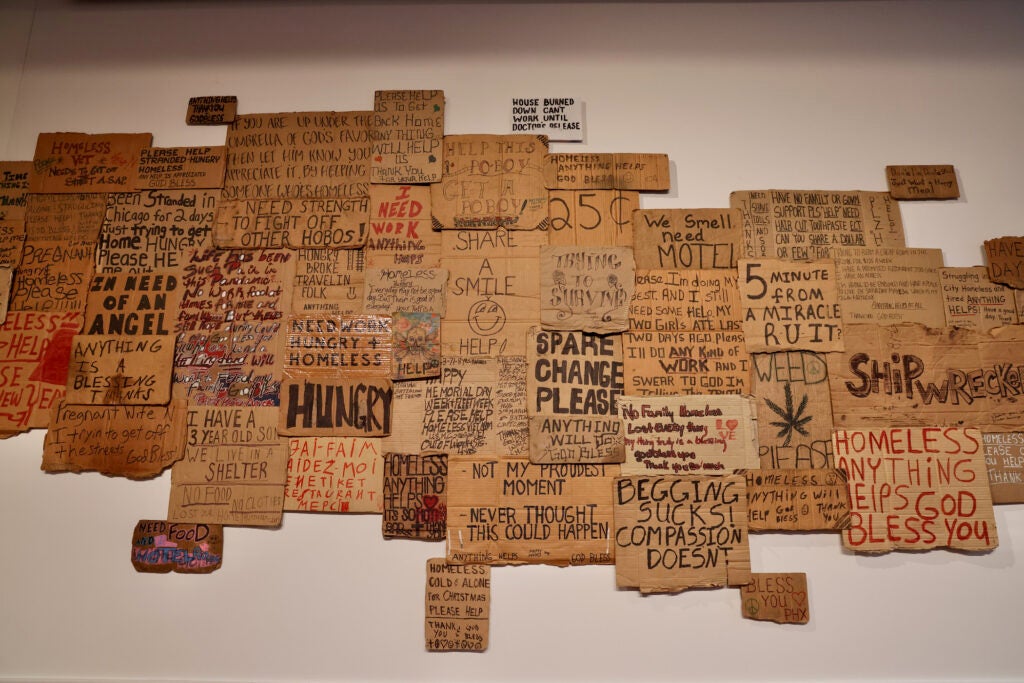
In between the two installations are quotes from anonymous Philadelphians experiencing homelessness, and data: There are an estimated 4,665 people experiencing homelessness in Philadelphia, and a full-time, minimum wage monthly income ($1,160) would not amount to enough to rent an average one-bedroom apartment in the city ($1,500). Just 6% of apartments in Philadelphia rent for less than $1000.
“I wish the community would support things like shelters, places to shower, soup kitchens, things like that,” one unnamed Philadelphia resident is quoted saying. “There’s nowhere for us to bathe.”
The Mütter Museum, known widely for its display of body parts afflicted with various pathologies, is in a transition period right now as it weighs educational value against medical ethics surrounding the display of human remains.
Director Kate Quinn said this exhibition in the Thompson Gallery — separate from the main Mütter galleries — is reserved for temporary exhibitions of a different nature.
“With special exhibitions and programs you have an opportunity to be very responsive to things that are happening in the world today,” she said. “I do imagine that, moving forward, using special exhibitions to really focus on issues that are facing Philadelphians today is absolutely where we’ll be headed in the future.”
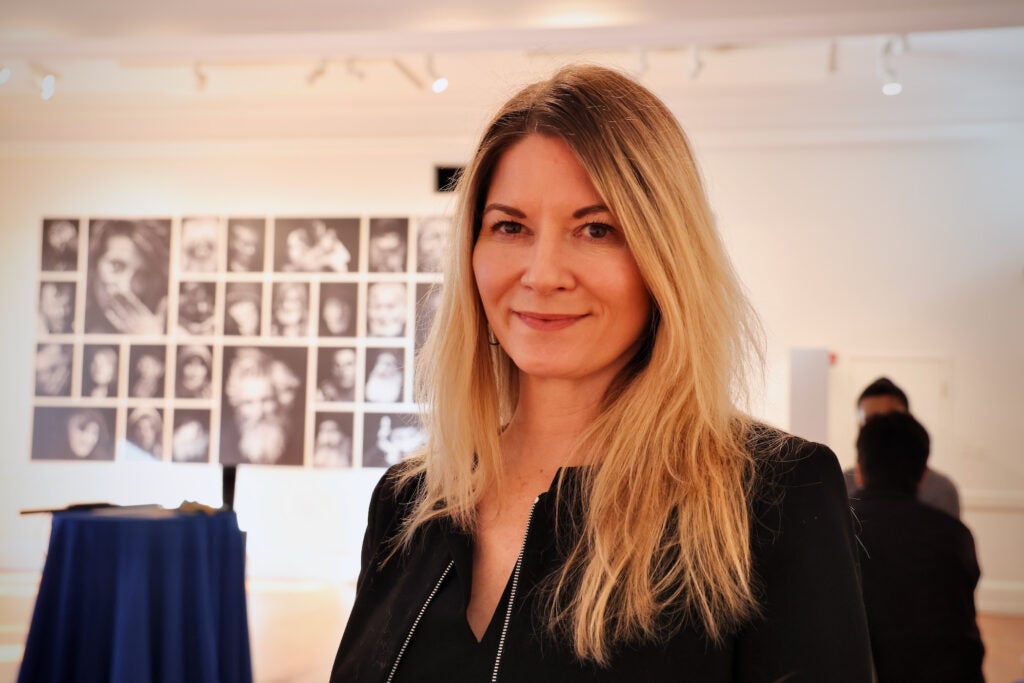
Willie Baronet started buying handwritten signs from people in the street 31 years ago, paying people $10 or $20 each, and has amassed about 2200 so far. He has shown his collection in Philadelphia before: at Thomas Jefferson University in 2018, and his acquisition of signs from people in Philadelphia in 2014 was filmed for a documentary, “Signs of Humanity.”
But he had never been to the Mütter before.
“It’s amazing and awesome that they are willing to have this subject matter, which is very much connected to public health, very much connected to policy shifts in the future,” Baronet said. “I feel like it’s a great location.”
Baronet, a founder and former director of a creative consulting firm, now teaches advertising at Southern Methodist University (SMU). He brings his graphic design sensibility to his collection of cardboard signs that ask passersby for help. Some are funny (“Don’t Lie, Don’t Steal, Just want a Happy Meal”), some are tragic (“Pregnant, hungry, and homeless Please help!!!”), and some are magnanimous (“If you are under the umbrella of God’s favor then let him know you appreciate it by helping someone whoes [sic] homeless”).
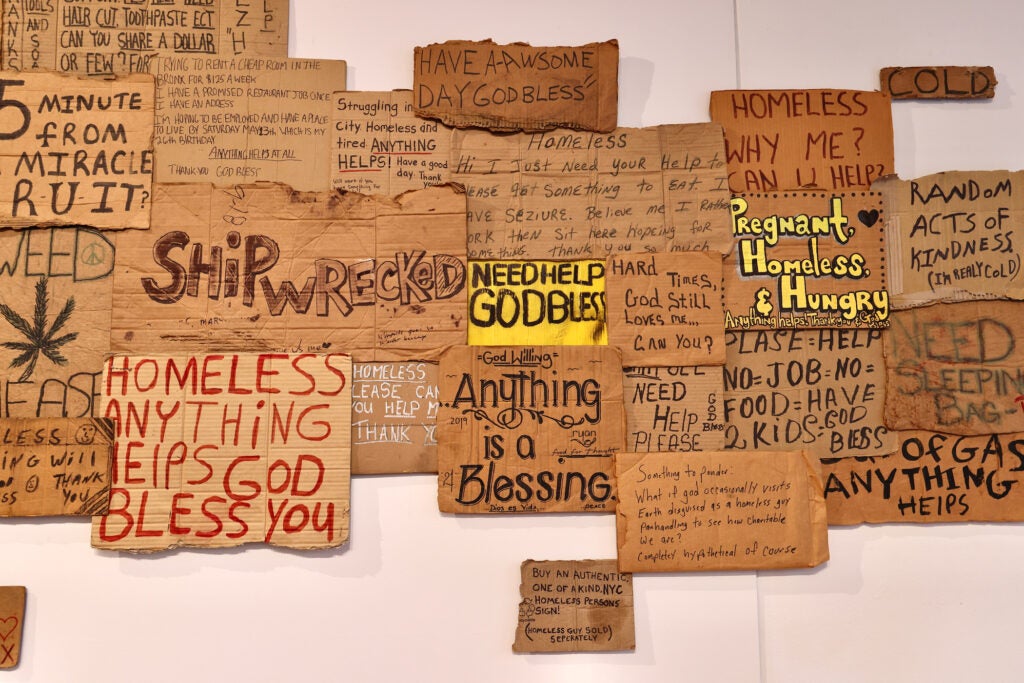
While assembling the cluster of signs, Baronet considered the juxtaposition of different messages and intent, the quality of the typeface — some are very accomplished — and even the different shades of cardboard brown and the stains they accumulate.
The mass of pleas has an aesthetic.
“I’m trying to teach my students about using their advertising skills for good, finding ways to do compelling things with their ability to tell stories,” Baronet said. “And on another level: These signs are a really basic form of advertising. They have one shot to write a message.”
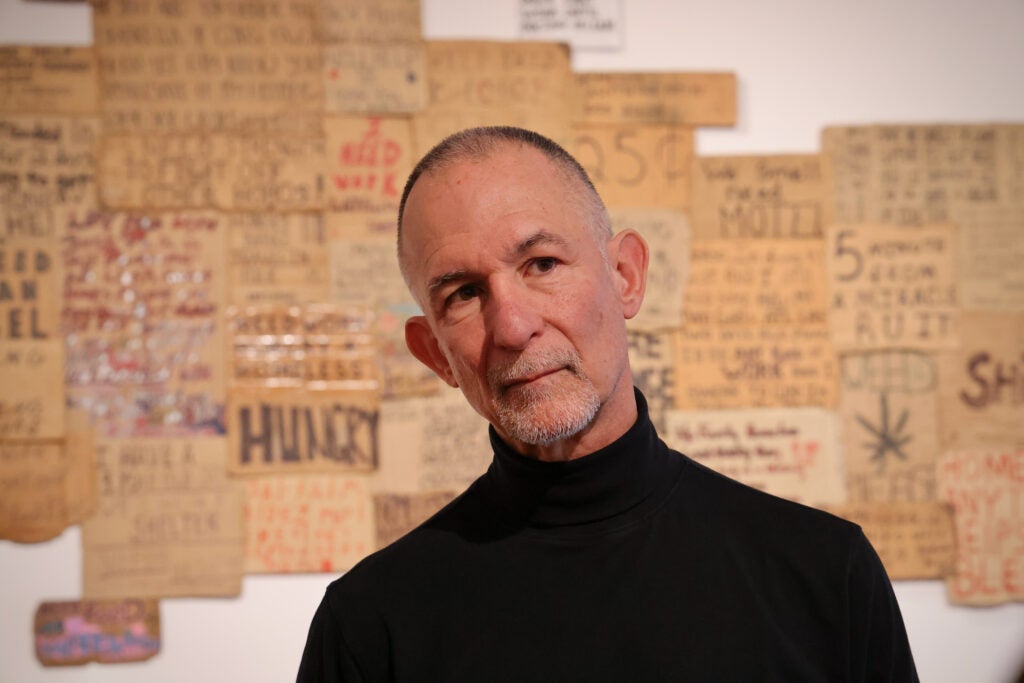
Baronet, like den Bok on the opposite wall, is trying to evoke empathy for people who are often ignored in public spaces. “Unhoused” is an exhibition of advocacy, curated in consultation with Rosie Frasso, a professor of population health at Thomas Jefferson University. She said homelessness is a public health concern that impacts people beyond the homeless population.
“We share the streets, neighborhoods and communities with them,” Frasso said. “The level of need and concern that we all feel around this community does impact our sense of safety, stress, anxiety, wellness broadly.”
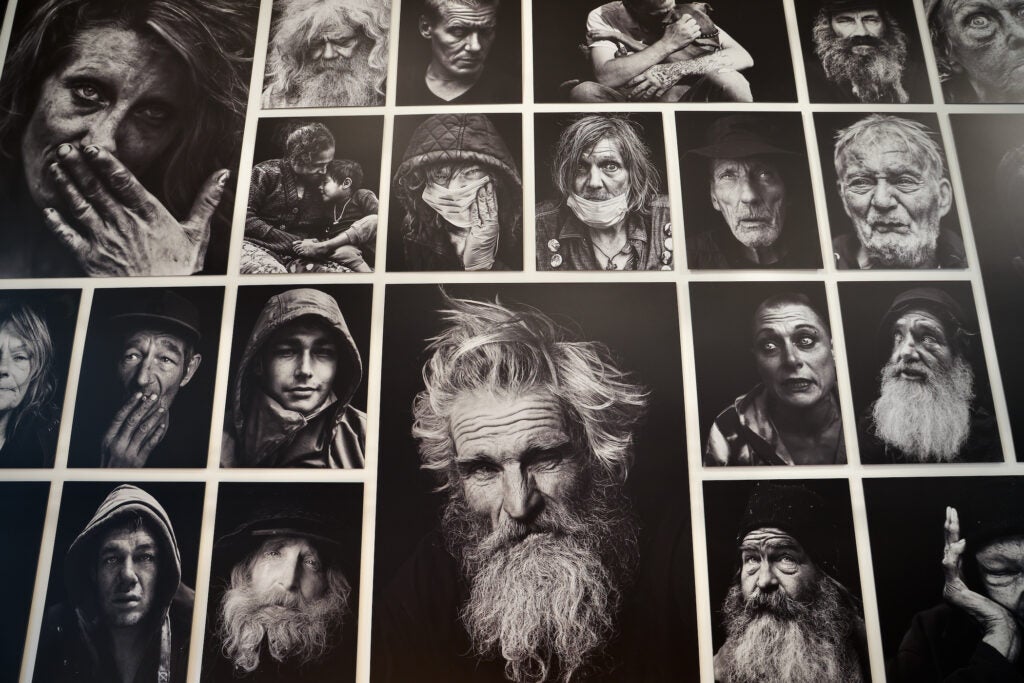
“There’s a big push in cities across the country for anti-homeless architecture, so that benches and stools and places where folks could rest and lay their heads are now designed in a way that discourages folks that are unhoused from using them. That burden is something we need to feel in a communal way,” she said.
Rene Najera is the director of public health for the Mütter Museum’s parent organization, the College of Physicians. He hopes “Unhoused” will shift public perception: Homelessness may be a problem, but people experiencing homelessness are not.
“Not calling the people themselves a problem any more than we would say children are an issue because there’s measles. If we had no children, we wouldn’t have measles — that’s not the mindset that you want to have,” Najera said. “It’s a societal, structural policy, a mental health and public health issue that is affecting people whom we want to untag as being homeless. They are experiencing homelessness.”
“Unhoused: Personal Stories and Public Health” will be on view at the Mütter Museum until August 5. Over the course of the exhibition, the Mütter will be programming events, such as talks with people who have experienced homelessness and public health workers.

Get daily updates from WHYY News!
WHYY is your source for fact-based, in-depth journalism and information. As a nonprofit organization, we rely on financial support from readers like you. Please give today.



